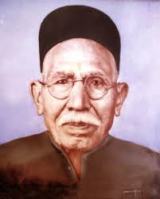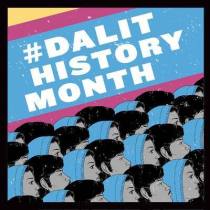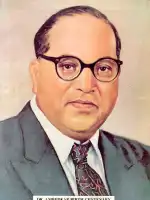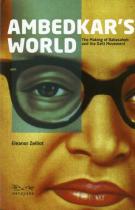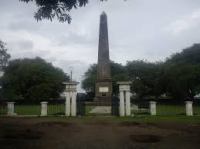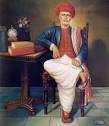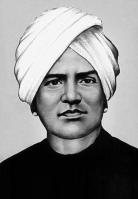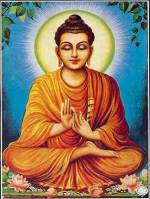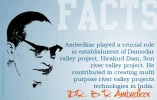Prior to the partition of Indian sub-continental in August 1947, Punjab was the land of the five rivers: Sutlej, Beas, Ravi, Chenab and Jhelam. Then, it was divided into two halves-East Punjab(India) and West Punjab (Pakistan). The East Punjab was further divided on linguistic basis on 1st November, 1996 into three states of Punjab, Haryana and Himanchal Pradesh.
Buddhist came to Punjab through the Buddha himself and gained a good hold in the Punjab-Gandhara region within 300 years of the Mahaparinirvana of the Buddha in 483 B.C. There after, for more than 1,000 years, Buddhism was the predominant religion of the people of the region. During that period, a galaxy of Buddhist saints, scholars, artists, poets and philosophers like Nagasena, Asvaghosa, Asanga and Vasubandhu not only enriched the culture of the North-West region but also influenced and moulded the destiny of Buddhism kings of India: Milinda, Kanishka and Harsha flourished in the united Punjab, while the fourth, the most renowned Buddhist Emperor, Ashoka also started his career in the Punjab. Later, under the weight of political and religious upheavals, Buddhism disappeared from the plains but it managed to survive in some hilly tracts in the present day Himachal Pradesh.
In the present day Punjab, Tsang, the celebrated Chinese pilgrim, who was in India for 14 years from 630 AD to 643 AD, visited three cities- Chinapatti, Jalandhar and Satadru.
1. Chinapatti: has been identified with the modern Patti in Amritsar district. It was so known because it was the winter residence of Kanishka’s Chinese hostages. Here, the pilgrim saw ten monasteries full of monks. He stayed here for 14 months, from January 634 to March 635 and studied the Abhidhamma sastra with the famous scholar, Vinitaprabha.
2. Jalandhar: the city of Jalandhara visited by Hieun Tsang was the modern Jalandhara. Even at that time it was a large city and was the capital of the Jalandhar kingdom, also known as Trigarta. The king of the Jalandhara kingdom was a Buddhist and an ally of Harsha, the last Buddhist Emperor of India (606 -647 AD). According to Hiuen Tsang, his name was Wuddhi or Udito. While at Jalandhar in March-July 635 AD Hiuen Tsang was treated as a State Guest by the king of Jalandhara.
At Jalandhara, Hiuen Tsang saw about 50 viharas with about 200 monks. One of the well-known viharas was known as Nagardhana in which resided Venerable Chandravarma, a famous Buddhist scholar of those times. Hiuen Tsang stayed in this vihara for four months and studied with Chandravarma a commentary known as Prakarana-Pada-Vibhasa-Sastra. Hieun Tsang again visited Jalandhar in 643 AD when he was on his way back to china. In fact, Harsha had charged king Udito to conduct the pilgrim in safety to the froniers.
3. Satadru: Satadru was another name of the river Sutlej and in olden days it also denoted a kingdom, the capital of which was Satadrue, now identified with Sanghol, near Sirhind. Here, Hiuen Tsang saw ten sangharamas but the halls were deserted and cold, with very few priests. Here, Asoka had also constructed a stupa which was still standing at the time of Hiuen Tsang’s visit.

SANGHOL
Out of the three places described by Hiuen Tsang, only Satadru or Sanghol has been discovered and excavated in modern Punjab. Sanghol is 65 kms by road from Ludhiana and 40 km from Chandigarh on the Ludhiana – Chandigarh road. Sanghol is 16 km by road from Sirhind railway station.
The most important monument unearthed at Sanghol by the experts of the Department of Archaeology and Museums, Punjab is the stupa and the monastery complex4. The stupa, which appears to have been first built by Asoka in the 3rd century B.C, is on the pattern of Dhamma – Chakra (Wheel of Law). The cylindrical stupa is of 16 metre diameter on a 17 metres square platoform – the pradakshina or circumambulation of the stupa raised at height. There is also a surkhi or murram pathway about 5.34m. in width all around the stupa. In the east is a paved pathway along which a number of votive stupas of solid mud were erected by the devotees.
From the central portion of the stupa were recovered a tooth, ashes and some bones as also the bottom portion of a relic casket-most probably the body relics of the Buddha. The excavation also yielded a lid with a Kharosthi legend of 1st -2nd century B.C. Upasaka Ayabhadra mentioned in the legend may have been responsible for enshrining the relics in the stupa.
The priceless find at Sanghol, which has put it prominently on the archaeological map of the Kushana period from the railing around the stupa on the square platform. These railing pillars were found in a pit between the monastery and the stupa on February 2, 1985. The valuable parts of the railing include 4 corner pillars, 58 upright pillars, 7 double sided pillars, 35 cross bars and 13 coping stones.
On the four corner pillars one is with Dharma-Chakradhvaja, two with Simbadhvaja and the last with stupa and devotees. The upright pillars have beautiful carvings of Yakshis, an Upasaka (a lay devotee), a Chakravartin (a royal devotee). The coping stones mounted on the railing pillars are decorated with a series of arched windows containing Buddhist symbols like dharmachakra, lotus, worship of the relic caskets, worship of Buddha’s bowl and other auspicious symbols. The cross bars which joins the tow pillars are decorated with lotus medallions. The Singhol sculptures are considered as the best specimen of the Buddhist art of 2nd century A.D.
During the excavation in the adjoining areas, a broken portion of stones from a gateway of the stupa, depicting jataka stories in red stone was also recovered. Coins of all the kings of the Kushana dynasty and also seals and sealing in Kharosthi and Brahmi scripts have been discovered. A large citadel with internal and external moats has also been unearthed. The monastery is yet to be fully excavated.
OTHER BUDDHIST SITES
Some Buddhist remains found in Ludhiana district are at Tihara, a place in the north-west corner of Jagraon Tehsil. Tihara has been indentified with the city of Varat mentioned in the Mahabharata. On the mounds here a large number of small square copper coins have been found having on one side the Buddhist5 wheel and on the other the names of the Rajas in old Sanskrit. Besides coins, impressions of seals in burnt clay, large bricks, dice glazed pottery and many other antiquities, including the impressions of coins of the Yaudheyas in clay also been found. Another place important Buddhist point of view in this Tehsil is Arura, which lays a little north of Bhadar and about 10 miles south of Jagraon. “The old tank called Raniyana near Arura is frequented by numerous pilgrims. People say that the ancient name of this place was Ahichatta, and that its ruler, Raja Buddhamati, composed a work in Prakrit, entitled Dharma Katha, which is still used by the Puja tribe in the District.”6
AMRITSAR
Sikhism is younger to Buddhism by over 2000 years as Guru Nanak, its founder was born in 1469AD whereas the Buddha lived in the sixth century BC. In spite of that, and the fact that Sikhism arose when almost all traces of Buddhism had disappeared from India, the religion of the Buddha can be said to have left its mark on the Sikh religion.
In the hey day of Buddhism, the Viharas were the places where not only monks but lay people also could get food and shelter, whenever in need. The system of ‘Guru Ka Langar’ food for everybody in vogue in the Gurudwaras seems to have been adopted by the Sikh Gurus by taking cue from the Buddhist tradition prevalent amongst some yogis. Further, the Gurus seem to have constructed the Golden temple, Amritsar with four gates on the pattern of the Buddhist Viharas. Prior to the rise of Buddhism, the temples had only one gate. The Buddhists introduced the practice of four gates with a view to emphasize equality i.e. the Viharas were open to all.
The Buddhist heritage has passed on to the Sikhs in another form also. The Sikhs consider the tank in the Golden Temple, Amritsar as the most sacred. This tank was a small take when Guru Ram Das, the fourth Guru, per chance discovered it. He acclaimed it Amritsar, the tank of nectar. This tank is said to be Buddhistic in origin. It has science been identified as the famous lake of Padmasambhave. St. Padmasambhave hailed from the swat Valley and was a powerful apostle of Tantrism. He flourished in the eighth century and did a lot to propagate Buddhism in Tibet where he went in 747 A.D. The Tibetan considers him as their Guru and regards him next only to the Buddha. The name padmasambhava means the lotus born. According to a Tibetan tradition7, Padmasabhava was found by the king Indraodhi or Indrabhuti of Udyana or Urgayan on the pethls of a lotus flower in this lake.
In olden days the pilgrims from Tibet used to visit this lake while on pilgrimage to other Buddhist shrines in the Punjab. In this connection we reproduce below what the famous Italian scholar, G.Tucci, has said about the itinerary of the Tibetan pilgrims who came to India in the 13th century.
“At the time of Stag Ts” a rasa pa there was a regular intercourse between Jalandhra and Tibet as there is even now. There is hardly any doubt that this was chiefly due to the travels of Tibetan pilgrims of the Dsogs C’en and especially bka rgyad pa sects who used to visit the sacred places of Buddhist tradition. After God Ts an pa, their number must have considerably increased; today there is a regular intercourse along the routes and the tracks of Western Tibet.
From there, they descend to the holy tirthas of the Buddhist tradition, to Amritsar where the tank of the Golden Temple is believed to be the lake of Padamasambhava, to Bodh Gaya, to Sarnath.8
So there is indeed a rich heritage of Buddhism in modern Punjab.
BIBLIOGRAPHY
Note: This has been taken from my book “Buddhist Sites and Shrines in India : History, Art and Architecture,” Published by Sri Satguru Publications-Indian Books Centre, Delhi, 2003.
1-3. Samuel Beal, Buddhist records of the Western World, translated from the Chinese of Huen Tsang, 1981 Reprint.
4. S.P.Gupta, Kushana sculptures from Sanghol 1st, 2nd century A.C. Vol.1, New Delhi, 1986.
5-6. Punjab District Gazetter, Ludhiana district, 1908.
7. L.A.Wadell, Budhism of Tibet, 1959 Reprint.
8. G.Tucchi, Travels of Tibetan pilgrims to the Swart Valley, 1940.
Source – Ambedkarite Buddhist
In case you liked the post, please share it with your friends. Also, Like us on [themify_icon icon=”fa-facebook-square” label=”Facebook” link=”https://www.facebook.com/drbrambedkarscaravan” ] and Follow us on [themify_icon icon=”fa-twitter-square” label=”Twitter” link=”https://twitter.com/Silent_Steps” ]















